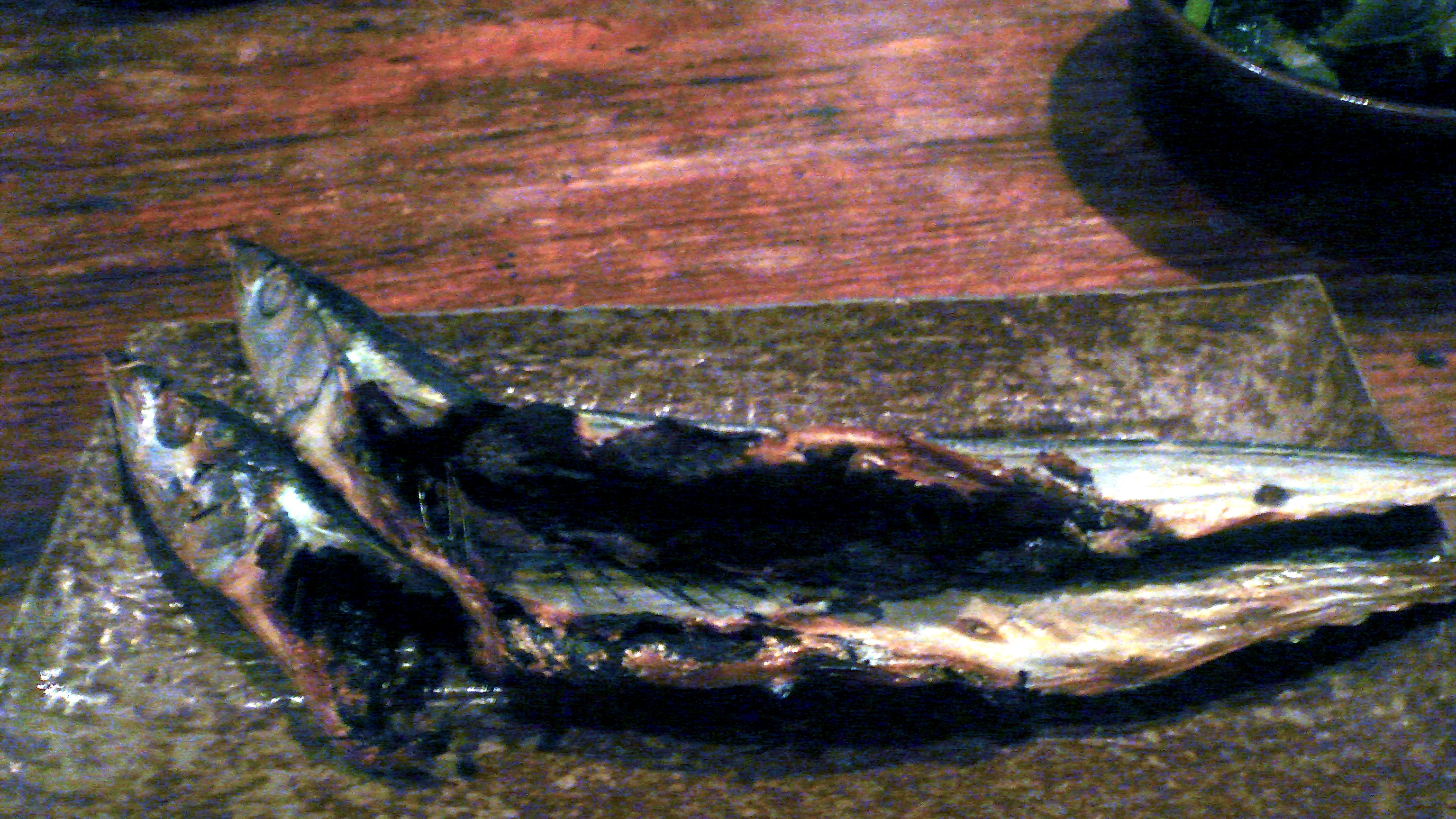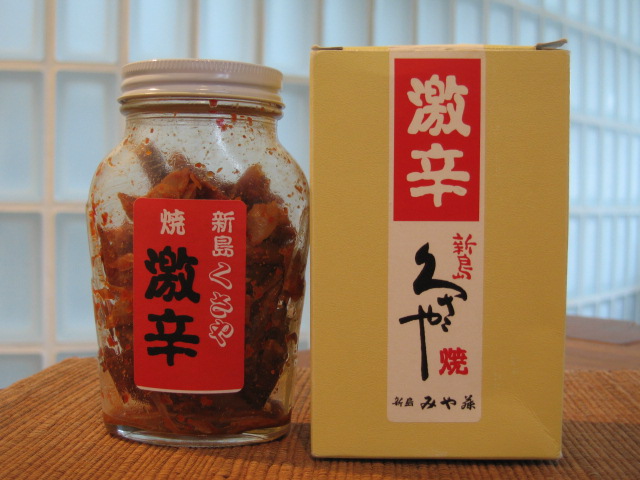Kusaya on:
[Wikipedia]
[Google]
[Amazon]
 is a salted, dried and fermented fish that is produced in the
is a salted, dried and fermented fish that is produced in the 
Niijima Fish Processing Co-operative
Niijima-mura Museum
Kusaya photos
{{Dried fish Dried fish Fermented fish Izu Islands Japanese seafood
 is a salted, dried and fermented fish that is produced in the
is a salted, dried and fermented fish that is produced in the Izu Islands
The are a group of volcanic islands stretching south and east from the Izu Peninsula of Honshū, Japan. Administratively, they form two towns and six villages; all part of Tokyo Prefecture. The largest is Izu Ōshima, usually called simply Š...
, Japan
Japan ( ja, 日本, or , and formally , ''Nihonkoku'') is an island country in East Asia. It is situated in the northwest Pacific Ocean, and is bordered on the west by the Sea of Japan, while extending from the Sea of Okhotsk in the n ...
. It has a pungent smell and is similar to the fermented Swedish herring surstr├Âmming.
Taste
Though the smell of kusaya is strong, its taste is quite mellow. Kusaya is often eaten with Japanesesake
Sake, also spelled sak├® ( ; also referred to as Japanese rice wine), is an alcoholic beverage of Japanese origin made by fermenting rice that has been polished to remove the bran. Despite the name ''Japanese rice wine'', sake, and in ...
or sh┼ıch┼½
is a Japanese distilled beverage. It is typically distilled from rice, barley, sweet potatoes, buckwheat, or brown sugar, though it is sometimes produced from other ingredients such as chestnut, sesame seeds, potatoes, or even carrots.
...
, particularly a local drink called ''Shima Jiman'' (literally ''island pride''). The brine used to make kusaya, which includes many vitamins and organic acid
An organic acid is an organic compound with acidic properties. The most common organic acids are the carboxylic acids, whose acidity is associated with their carboxyl group ÔÇôCOOH. Sulfonic acids, containing the group ÔÇôSO2OH, are ...
s such as acetic acid
Acetic acid , systematically named ethanoic acid , is an acidic, colourless liquid and organic compound with the chemical formula (also written as , , or ). Vinegar is at least 4% acetic acid by volume, making acetic acid the main componen ...
, propionic acid
Propionic acid (, from the Greek words ¤Ç¤üß┐¤ä╬┐¤é : ''pr┼ıtos'', meaning "first", and ¤Ç╬»¤ë╬¢ : ''p├¡┼ın'', meaning "fat"; also known as propanoic acid) is a naturally occurring carboxylic acid with chemical formula CH3CH2CO2H. It is a li ...
and amino acid
Amino acids are organic compounds that contain both amino and carboxylic acid functional groups. Although hundreds of amino acids exist in nature, by far the most important are the alpha-amino acids, which comprise proteins. Only 22 alpha ...
s, contributes much nutritional value to the resulting dried fish.
History
Kusaya originated in theIzu Islands
The are a group of volcanic islands stretching south and east from the Izu Peninsula of Honshū, Japan. Administratively, they form two towns and six villages; all part of Tokyo Prefecture. The largest is Izu Ōshima, usually called simply Š...
, probably on Niijima
is a volcanic Japanese island administered by the Tokyo Metropolitan Government. It is one of the Izu Seven Islands group of the seven northern islands of the Izu archipelago, and is located approximately south of T┼ıky┼ı and south of S ...
, where, during the Edo period
The or is the period between 1603 and 1867 in the history of Japan, when Japan was under the rule of the Tokugawa shogunate and the country's 300 regional '' daimyo''. Emerging from the chaos of the Sengoku period, the Edo period was character ...
people used to earn a living through salt making. Villagers paid taxes to the government with the salt they made, and as taxes were high, salt for fish-curing was used frugally. The same salt was used many times for this purpose, resulting in a pungent dried fish, which was later called kusaya. The resulting tea-colored, sticky, stinky brine was passed on from generation to generation as a family heirloom. Though kusaya is made on several of the Izu Islands today, it is said that kusaya from Niijima has the strongest odor.
Making kusaya
Mackerel scad (''Decapterus macarellus''), flying fish and other similar species are used to make kusaya. The fish is washed in clear water many times before being soaked in a brine called ) for eight to twenty hours. This mixture has a salt concentration of 8%, compared to the concentration of 18% to 20% in common fish curing brines. After this process, the fish are laid out under the sun to dry for one or two days. The Niijima-Mura Museum on Niijima has several installations, including a video, on the making of kusaya.See also
* * SakanaReferences
External links
Niijima Fish Processing Co-operative
Niijima-mura Museum
Kusaya photos
{{Dried fish Dried fish Fermented fish Izu Islands Japanese seafood